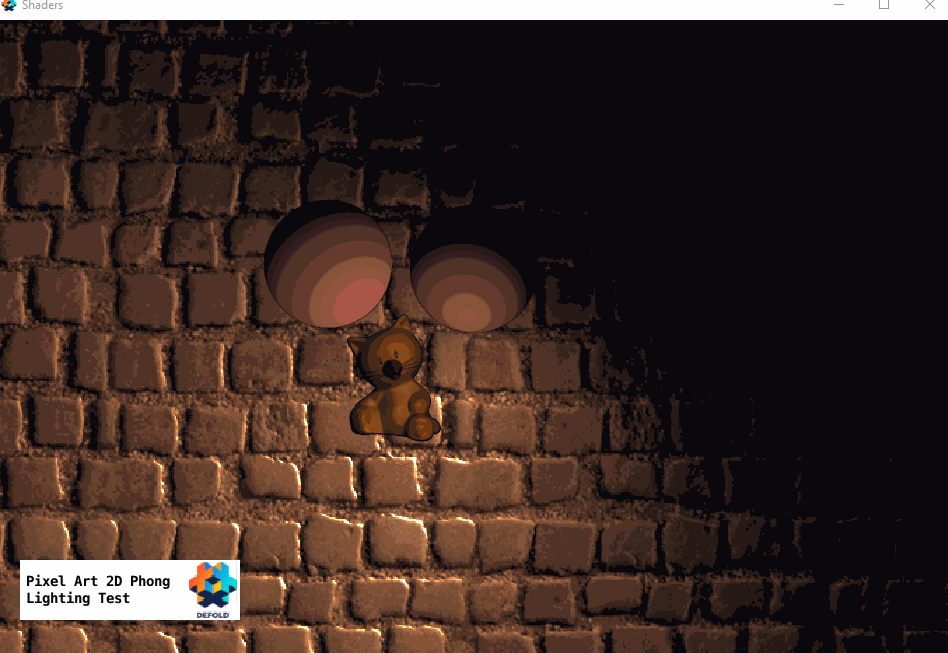The issue is clearly visible - direction of light is somehow always “pointing” to/from the left bottom center. How could I make it point from viewers point of view (middle of screen, with Z around 100)? To make circular like light, like I would be pointing with a flashlight where I click? ![]()
![]()
// Get Light Direction
lowp vec3 light_dir = normalize(point_light_pos.xyz - var_world_coord0.xyz);
Where position of mouse point_light_pos is set from script:
function on_input(self, action_id, action)
if action.released then
msg.post("@render:", "set_point_light", {pos = vmath.vector4(action.screen_x, action.screen_y, 100,0)})
end
end
Vertex program of the sprites defines var_world_coord0 as in default sprite material:
void main()
{
gl_Position = view_proj * vec4(position.xyz, 1.0);
var_texcoord0 = texcoord0;
var_world_coord0 = position.xyz;
}

Gif is banding colours, tomorrow I will record mp4.